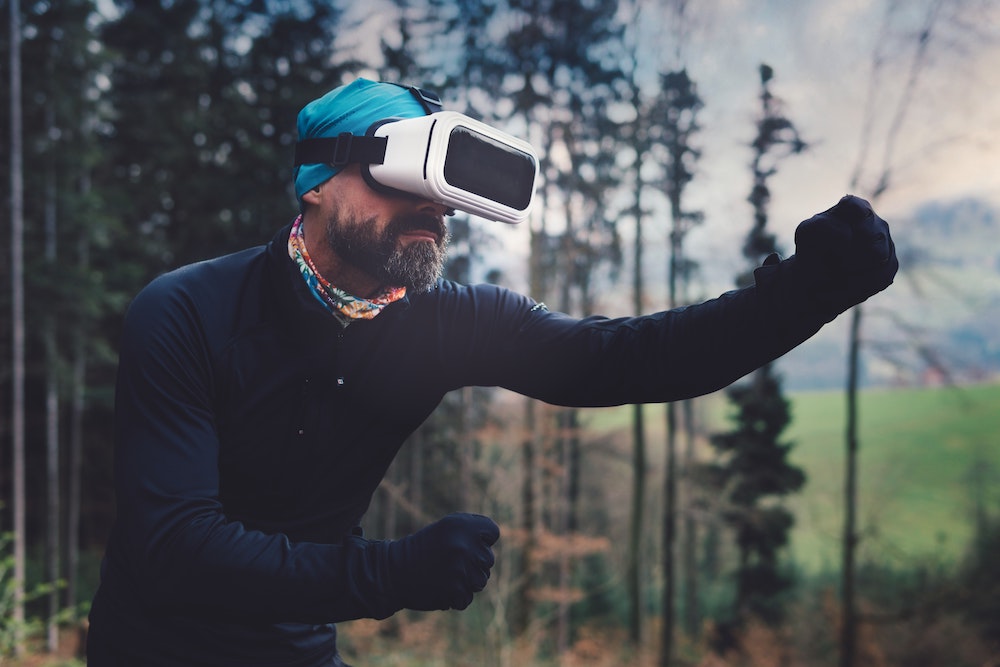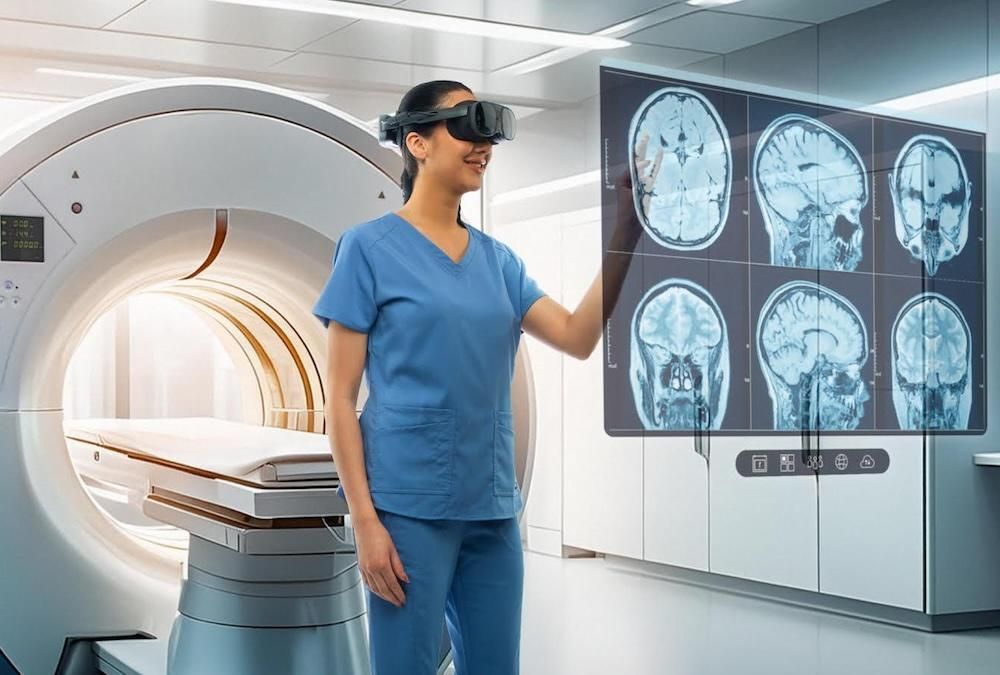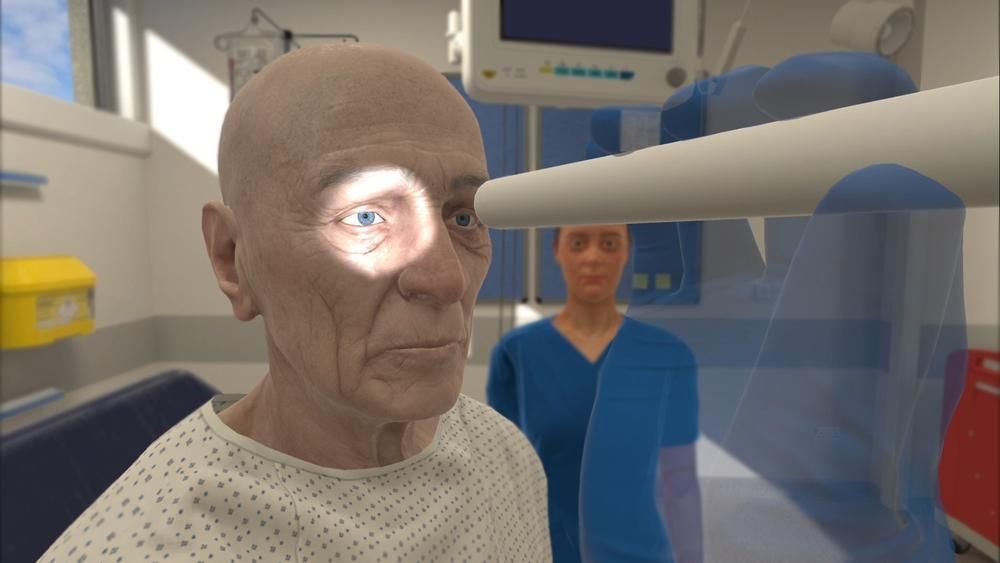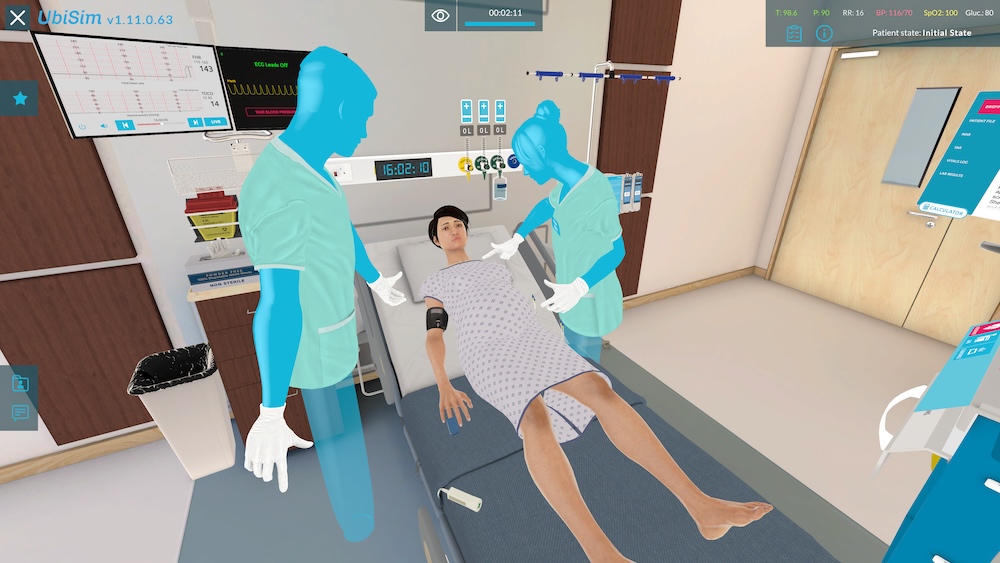Virtual Reality provides the ideal tool for healthcare simulation situational awareness training because it engages multiple learning systems in the brain in synchrony. Situational awareness, defined as the ability to understand how information, events and actions impact the current and future situations, is critical in healthcare settings. Whether making a decision on the appropriate pharmacological or surgical intervention, healthcare professionals must make quick and accurate decisions under duress (e.g., time or social pressure), knowing full well that the situation could change drastically within minutes. This ability to know “what to do when”, and to “think on one’s feet” can make the difference between life or death, or calming a situation that could get out of control. Today, guest author Todd Maddox, Ph.D., Founder and CEO at Cognitive Design and Statistical Consulting, shares how VR trains situational awareness via Medical Simulation.
Situational awareness in healthcare settings can be trained, and it must be trained as effectively as possible before the healthcare professional is on-the-job. Unfortunately, situational awareness is difficult to train because it involves training a number of distinct skills to effectively work in concert. First, one must develop a strong knowledge base, such as knowing about symptom-medication relationships and drug interactions. Second, one must develop a broad behavioral repertoire, such as knowing how to insert a catheter, stabilize a broken limb, or conduct a delicate surgical procedure. Finally, one must develop the ability to know what knowledge and behaviors to apply when, even when time is of the essence, conditions are chaotic and volatile, or if all of the appropriate tools are not available. All of these skills must be present in the healthcare professional and must work in concert for effective situational awareness. A classic example is triage in the emergency room. One must prioritize patients based on the currently available medical supplies and the seriousness of their injuries but must also be keenly aware that additional patients are on their way. This evaluation will determine the appropriate medical knowledge and behaviors to apply.
From a learning science perspective—the marriage of psychology and brain science—situational awareness is challenging because it requires training distinct skills that are each mediated by a different learning system in the brain. Gaining a strong knowledge base relies on the cognitive skills learning system in the brain that is mediated by the prefrontal cortex, hippocampus and associated medial temporal lobe structures in the brain and relies heavily on working memory and attention. Gaining a strong behavioral repertoire relies on the behavioral skills learning system in the brain that is mediated by the basal ganglia and gradual, incremental dopamine-mediated changes in behavior. Interestingly, this system does not rely on working memory and attention, and is adversely affected by “overthinking it”. The ability to “read” a situation relies on emotional learning that is mediated by the amygdala and other limbic structures, and experiential learning that is mediated by brain regions associated with sensory processing (e.g., visual, auditory, tactile, olfactory). Whereas one can have a strong grasp of the facts, and a strong behavioral repertoire, in the end one has to select the facts and behaviors more appropriate to the given situation. Emotional and experiential processing strongly affects both cognitive and behavioral skills learning and is at the heart of situational awareness. True situational awareness emerges when cognitive, behavioral, emotional and experiential learning systems are recruited simultaneously.
The traditional approach to healthcare training involves sequential learning. One begins with textbook training that engages cognitive systems in the brain and facilitates a fact-based understanding. The requires extensive cognitive resources to convert abstract 2D static text into realistic 3D dynamic representations in one’s brain, and is often ineffective and error prone. Once proficient with the facts, hands on practice is introduced that engages behavioral systems in the brain and facilitates the development of behavioral repertoires. Unfortunately, and usually due to costs, behavioral training is limited and focused on routine situations. True situational awareness is not trained or is poorly trained and usually develops after years on-the-job.
In contrast to traditional approaches that involve sequential learning, immersive technologies like virtual reality (VR) train all four brain systems (cognitive, behavioral, emotional and experiential) in synchrony. This means that cognitive, behavioral and situational awareness are learned simultaneously within a given training scenario. With VR, healthcare professionals can receive effectively limitless training in a broad range of routine and non-routine situations including time pressure, chaotic conditions, or with a lack of the ideal medical tools. This will lead to stronger learning and better retention because multiple distinct, and highly interconnected memory traces are being created.
Training Situational Awareness in the Emergency Room
One excellent use case for VR in healthcare is in training situational awareness in the ED. The need for strong situational awareness is high in the emergency room. Situations are volatile and can change quickly. Life and death decisions have to be made while simultaneously gathering information, communicating with your team, and performing medical procedures. Patients and family members can become emotional or angry and a calm yet empathetic demeanor is needed. Medical supply levels can be adequate one minute and critically low the next.
It is difficult to simulate these situations during real-world training and instead situational awareness training is often on-the-job. Now imagine donning a VR headset and being transported into the middle of a chaotic ED experience. Imagine viewing the situation from the perspective of a patient and that of a healthcare professional. Imagine being tested on your knowledge of the steps to take to evaluate a gunshot wound, and your ability to demonstrate those behaviors, all the while being told that the patient is in critical condition and that time is of the essence. Once the patient is stabilized, imagine needing to explain the situation to a loved one and needing to console that individual. A virtual training experience like this engages cognitive systems in the brain while you verbalize the steps that you need to take. It engages behavioral systems in the brain while you demonstrate those steps. It engages emotional and experiential systems in the brain while you deal with the stress of being in the situation, process the environmental context surrounding you, and empathize with the patient and their family. All of this brain system processing is happening in real time, in synchrony, and in a safe training environment (although the tension “feels” real, which is exactly what you want).
Suppose you continue your ED clinical simulation training with a new situation in which an unruly patient appears to be hallucinating. You are unsure whether they have a mental health issue or are under the influence of PCP. You are simultaneously understaffed and are having difficulty communicating with the security personnel. To make matters worse you were just informed of a multi-car accident with a dozen potential patients in transit to the ED. In this case, you must make split second personnel decisions, evaluate staffing and supplies, all the while trying to de-escalate a potentially dangerous situation with a patient. These are just two of an infinite number of examples that can be trained multiple times in VR to ensure situational awareness when working in the ED.
Other Examples
Many other VR healthcare training scenarios come to mind. Suppose you are training to be a heart surgeon and want limitless practice performing virtual heart transplant surgery on multiple individuals with and without complications. Imagine being able to touch the patient because a realistic artificial cadaver is in front of you that provides the appropriate haptic feedback. You can do this with VR. Suppose you are training to be an EMT and want practice delivery a baby. Imagine a situation in which you must deliver a baby in the back of the ambulance, without some critical piece of equipment and with a mother whose blood pressure is dangerously low. You can do this with VR. Suppose you want practice with the emergency procedures but you want as realistic a situation as possible. Imagine practicing safety drills for fire on the operating room, a chemical spill, or a hostage situation. You can do all of this with VR.
Conclusions
VR has the potential to speed the training of healthcare skills and will allow learners enough practice that they will be job-ready before entering a medical facility to see patients. The broad-based training available with a VR medical training platform can increase generalization and transfer of the trained information, will prepare healthcare professionals for any situation, and will increase confidence. The days of on-the-job training with live human patients (in EDs and training hospitals) could be over, or at the very least reduced in frequency.
Connect with Dr. Maddox Through LinkedIn to Learn More!
Have a story to share with the global healthcare simulation community? Submit your simulation news and resources here!








